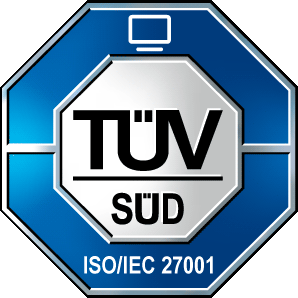Imagine being notified of a medical emergency via your smartwatch before you even become aware of the symptoms. What if, even in places without internet, your automobile could recognize and steer clear of obstacles in real time? Imagine a security camera capable of face recognition and addressing the possible threats in real-time, without any additional servers. These are no longer the distant dreams of tomorrow but the reality of Edge AI: an innovation that brings intelligence closer to action.
Comprehending the Edge AI Concept:
Edge AI fills the gap between the increasing demand for localized, real-time decision-making and centralized AI systems. The processing of data directly on devices will eliminate delay, reduce dependence on connectivity, and ensure higher privacy. Let’s examine how this revolutionizing technology is evolving and applying itself in various areas and how it molds the world around us.
The Growth and Necessity of Edge AI:
Introduction of linked devices and abundance of data from IoT systems necessitated the need for Edge AI. Reliance solely on centralized cloud systems will not be viable since it is estimated that the number of IoT devices would cross 75 billion by the year 2025. To meet the demands for faster processing, better privacy, and lower data transport costs, edge AI became necessary. Its expansion has been driven by sectors including healthcare, automotive, and smart cities, which have realized the shortcomings of conventional methods in managing sensitive, bandwidth-intensive, or real-time jobs.

Applications of Edge AI Across Various Domains:
1. Healthcare
Real-time patient vitals monitoring is made possible by edge AI in wearable technology, including smartwatches and portable diagnostic instruments. Devices offer physicians and patients instant feedback by locally examining data such as heart rate and oxygen levels. This method transforms critical care by resolving the problem of delayed diagnoses in traditional cloud-based systems and by facilitating quick response in emergencies.
2. Automotive
Automotive Edge AI is used by self-driving cars to perform local processing of sensor and camera data for faster responses to obstacles and changes in the environment. In certain situations, the latency introduced by traditional cloud architectures can be hazardous. To attain better performance and safety, Edge AI assures real-time decision-making.
3. Smart Cities
Edge AI-powered smart surveillance systems analyze video feeds locally to identify abnormalities, thus enhancing real-time threat detection. Overcoming the bandwidth constraint of streaming high-resolution video to the cloud, these solutions improve scalability and privacy in urban management.
4. Retail
Retailers utilize Edge AI for customer insights, inventory control, and tailored shopping experiences. By processing transactions and stock updates on-site, smart shelves and checkout-free businesses reduce wait times and boost operational effectiveness.

Advantages of Edge AI Over Traditional Approaches:
Edge AI offers significant improvements compared to conventional, cloud-based AI techniques, addressing and overcoming many of the latter’s drawbacks:
• Speed and Latency: Nearly instantaneous decision-making is made possible by Edge AI, which processes data directly on the device. For example, in critical situations such as driverless cars or medical emergencies, prompt reaction can save lives. In contrast, standard AI systems that rely on cloud servers for processing regularly encounter delays due to transmission over networks.
• Security and privacy: Edge AI minimizes the chances of mishandled private data transmission by keeping it local to the device. This is highly relevant to industries that have their primary dependency on compliance regarding privacy, such as health and banking. The conventional method has inherent vulnerabilities because it relies on transferring data across other systems.
• Connectivity Independence: Edge AI works well even in environments that have spotty or non-existent internet access. For example, remote industrial sensors or wearable health devices can function reliably without the need of frequent cloud connection, whereas traditional systems are highly limited in areas such as rural or bandwidth-constrained areas due to their heavy dependence on reliable and fast Internet connections.
• Scalability and Efficiency: Localized processing, which allows Edge AI helps avoid stressing the central cloud. Bottlenecks that may arise from an increase in data traffic are avoided by this decentralized method. Scalability is a significant headache of traditional AI models since huge amounts of data exist spread across various devices.
Essentially, Edge AI opens up new opportunities for real-time, private, and autonomous systems, even though it addresses the basic limitations of traditional AI systems.

Challenges and Drawbacks of Edge AI:
Despite its revolutionary potential, Edge AI faces certain challenges:
1. Hardware Constraints: Processing the AI models locally requires some advanced hardware, which could prove costly or space-consuming.
2. Energy Consumption: High-performance Edge AI, especially wearable or portable ones, consume battery resources much faster.
3. Model Complexity: Compressing complex AI models to train on edge devices without compromising accuracy is still a technical challenge.
4. Data Security: Though data is local, hackers or physical manipulation can still find their way into edge devices.
The Future of Edge AI:
The road ahead for Edge AI is as exhilarating as its current capabilities. The following wave of developments is expected to improve and broaden its scope, resolving current issues and opening new avenues for exploration:
• Model Optimization: Complex AI models may be implemented on devices with limited computational power by executing strategies such as quantization and pruning. In this way, even wearables and the smallest sensors can process data without an unacceptable compromise on accuracy.
• 5G Integration: Edge AI will dramatically transform businesses like augmented reality (AR), virtual reality (VR), and remote diagnostics once integrated with lightning-fast 5G networks. And even for extremely data-intensive applications, edge AI systems will give smoother user experiences that have never been seen previously, in terms of both speed and low latency.
• Energy Efficiency: Neuromorphic computing and other innovations in chip design will drastically reduce the energy usage of edge devices. This will ensure sustainability besides performance by allowing longer-lasting batteries and more environmentally friendly AI applications.
• Collaboration Between Edge and Cloud: Hybrid AI systems will combine the computing capabilities of cloud systems with the advantages of Edge AI’s localized processing. In addition to providing responsiveness in real time, this synergy will enable devices to make use of cloud-based analytics and storage.
A Future Transformed by Edge AI:
Edge AI is more than just a technological trend; it represents the true revolution that shall shape a new way of our relations to the world. Smarter cities, driverless cars, augmented reality, and personalized healthcare are only the beginning. This evolution will make technology faster, smarter, and more accessible, changing daily life in ways we can’t yet fully comprehend. As Edge AI continues to grow, it brings with it the promise of a linked society where gadgets not only comprehend but also anticipate human demands. The challenges ahead are real, but the potential is limitless. Although there will be difficulties along the way, there is also boundless possibility. Edge AI has every possibility to lead humankind into an era of technological harmony that has never been witnessed before, with the right developments and collaborations.
“The edge of innovation is here—bold, intelligent, and ready to transform the way we live, work, and dream.”









